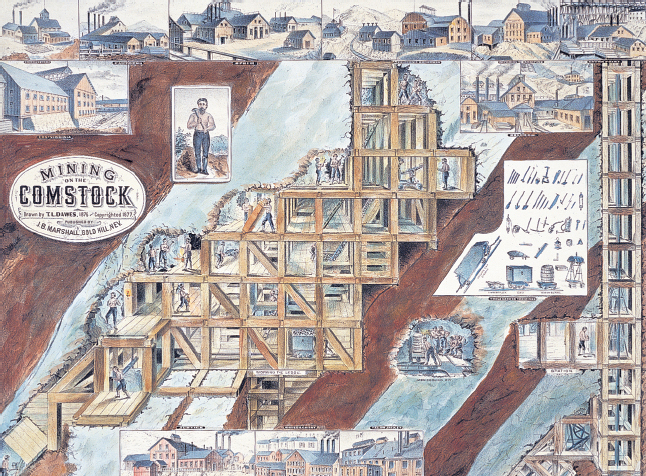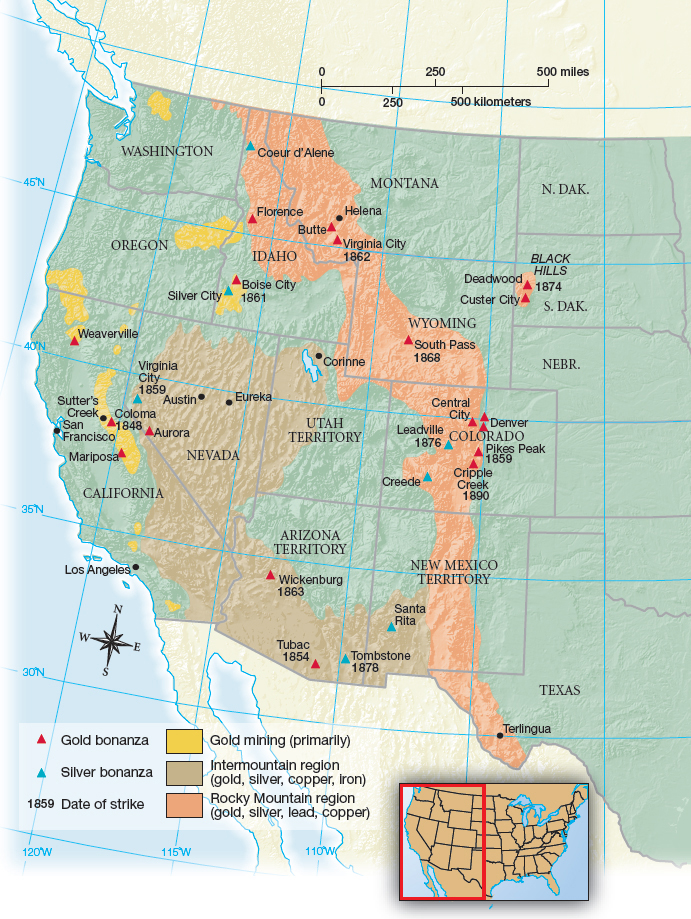How did mining shape American expansion?
Printed Page 500

CHRONOLOGY
1873
- – “Big Bonanza” is discovered on Comstock Lode.
1882
- – Chinese Exclusion Act.
MINING STOOD AT THE CENTER of the United States’ quest for empire in the West. The California gold rush of 1849 touched off the frenzy. The four decades following witnessed equally frenetic rushes for gold and other metals, most notably on the Comstock Lode in Nevada and later in New Mexico, Colorado, the Dakotas, Montana, Idaho, Arizona, and Utah (Map 17.2). At first glance, the mining West may seem much different from the East, but by the 1870s the term urban industrialism described Virginia City, Nevada, as accurately as it did Pittsburgh or Cleveland. A close look at life on the Comstock Lode indicates some of the patterns and paradoxes of western mining. The diversity of peoples drawn to the West by the promise of mining riches and land made the region the most cosmopolitan in the nation, as well as the most contested.
 Silver ore deposit discovered in 1859 in Nevada. Discovery of the Comstock Lode touched off a mining rush that brought a diverse population into the region and led to the establishment of a number of boomtowns, including Virginia City, Nevada.
Silver ore deposit discovered in 1859 in Nevada. Discovery of the Comstock Lode touched off a mining rush that brought a diverse population into the region and led to the establishment of a number of boomtowns, including Virginia City, Nevada.
